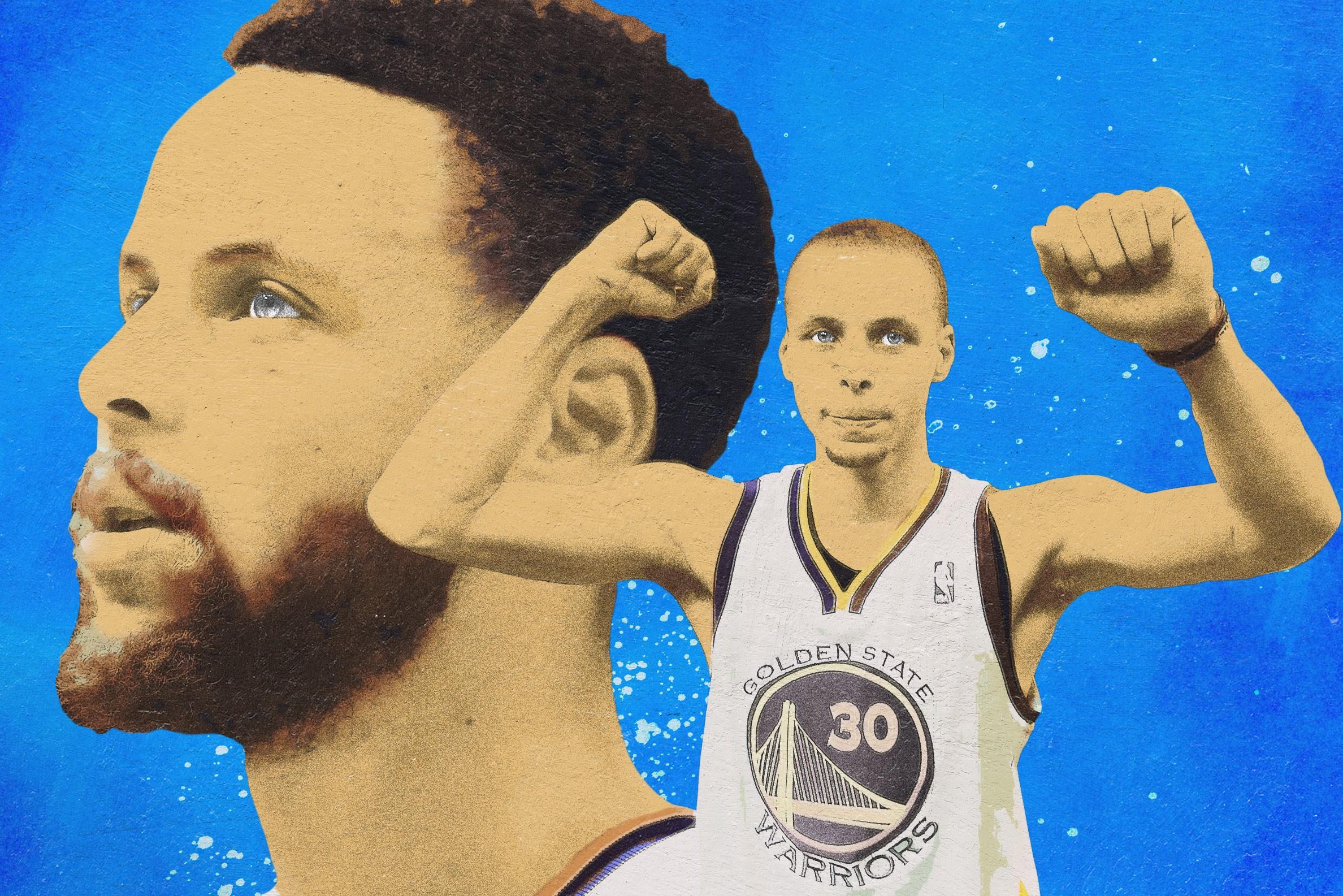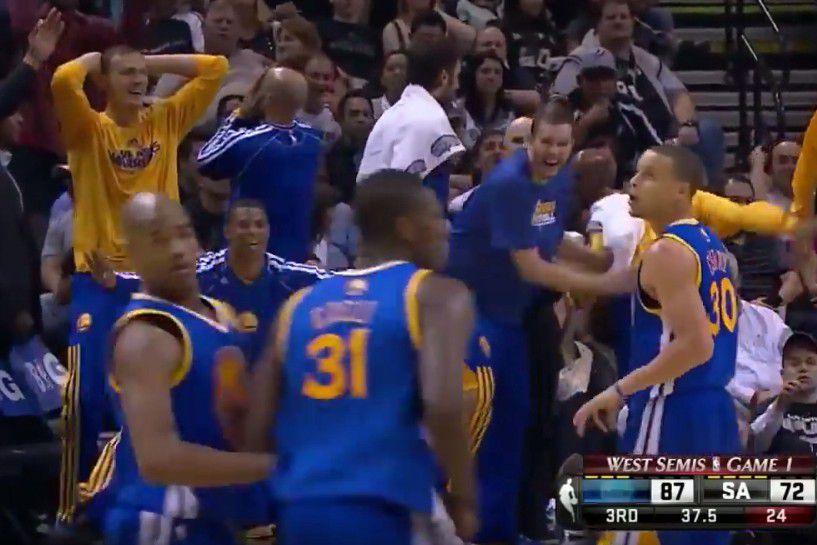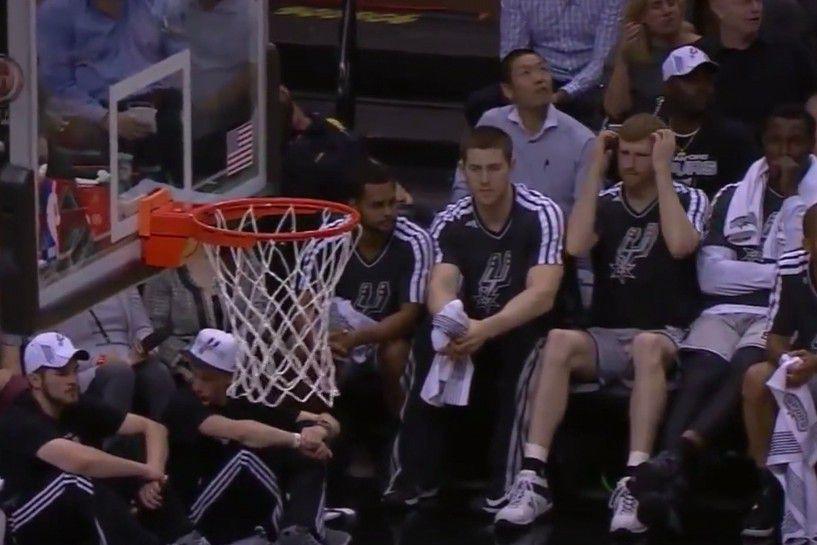
After 12 undefeated games thus far in the Warriors’ postseason run, there’s one question my mind keeps circling back to. It doesn’t have anything to do with LeBron James or the Cavaliers, or the whereabouts of Steve Kerr or Klay Thompson. It’s not about whether they can win 16 straight games, either (if there’s a team in history that could, we’re probably looking at it). The question is a bit more abstract, and a lot more navel-gazing: What exactly did last season do to us?
Recap the fallout of the 2015–16 season, and it starts to read like the effects of a designer drug: The 73 wins were euphoric; the Finals loss after being up 3–1 was a humiliating comedown; and this year, all season long, watching the Warriors has been like trying to find enjoyment despite a total dopamine deficiency. There are just only so many times a person can go back to the well before it dries up. In Golden State’s 129–115 finishing blow in San Antonio to reach its third consecutive NBA Finals, Steph Curry dropped 36 points in fewer than 34 minutes, raising his postseason average to 28.6 points per game on 50–43–90 splits.
But numbers just don’t seem like enough anymore. The Warriors aren’t necessarily boring, they’ve just reoriented their standards of beauty to something less visceral. Their beauty this season has been expressed in fractals, whereas last year, in searching for (and destroying) the NBA’s offensive boundaries, it possessed the kind of haphazard magic of a Jackson Pollock.
The biggest surprise Curry’s offered up all season hasn’t been how far he can launch a 3, but how much he can fill out his beard. The biggest struggle Curry has had in these playoffs isn’t in navigating greatness, but navigating the ennui that comes with Golden State’s systematic superiority. Curry puts up 36 points with same rote mastery that you possess with your remote browsing Netflix. Dude is bored, and so are we.
The Western Conference finals were a disappointment on several levels, not least of which was how it seemed to perpetuate the Warriors and Spurs’ ongoing missed connection. We were robbed of a legitimate duel between two top-three teams in the league, and have been for the last four years. The era has been defined and redefined several times over in that span, and it’s a shame we never got to see San Antonio, at full strength, take on the monolith it helped create. The Popovich-era Spurs inhabit greatness unlike any other team in sports: If they don’t outright exude it, then they serve as its canvas, effectively putting players and teams over, as one would say in wrestling parlance.
“We are a young basketball team that will be better for playing against the San Antonio Spurs, and we’re excited about this series,” Warriors head coach Mark Jackson said in 2013 after Game 1 of the Western Conference semifinals. “I thought I saw a lot of good things during the course of the game.”
On the night of May 6 that year, the Spurs and Warriors played one of the best postseason games of the last five years: a 129–127 double-overtime Spurs win in Game 1. San Antonio made history in the process, becoming the first NBA team to have ever won a playoff game when trailing by 16 points entering the final four minutes of the fourth quarter, something that had occurred 392 times prior without avail, according to the Elias Sports Bureau. Manu Ginobili hit the game-winning 3. But more important to the modern NBA landscape, it was the night when they helped crystalize Curry’s undeniable stardom.
Steph had moments of transcendence that predated Game 1 of the 2013 second round — who could forget his 54 points over the Knicks at Madison Square Garden? — but dominance registers differently against the Spurs. And this was all before he developed the lush beard, before he developed the upper-body strength required for some of his whirling dervishes through contact. This was back when he looked like, well, Steph Curry:
Curry played 57 minutes and 56 seconds — all but four seconds — of that double-overtime classic. The play that defined his night, and may well have spawned an icon, occurred with fewer than 40 seconds remaining in the third. What starts with Spurs guard Cory Joseph crowding on an isolation with Curry right at the arc becomes a lost-at-sea story when Curry begins to back up 26, 27, 28, 29 feet away from the basket. Curry turns and explodes into a left-to-right crossover. Before Joseph could trace his steps, there is a 29-footer from straight away that goes through the net.
In the same instant, on opposite benches, Andris Biedrins and Matt Bonner entered surrender-cobra formation for two different reasons:


It was Curry’s 32nd point. Curry had 22 (9-for-12 from the field, 4-for-6 from 3) in the third quarter alone on a 91.7 effective field goal percentage. While he’d score 12 more the rest of the game, he wouldn’t hit another jump shot. They had put Kawhi Leonard on him, who funneled Curry into the lane with an expectant Tim Duncan waiting for him at the summit. Curry took what he was given tentatively, since he wasn’t yet equipped with some of the more dazzling sleight-of-hand maneuvers he possesses today. If they’re going to treat me like a star from behind the arc, they’re going to have to start treating me like a star at the rim, too, his shift in game plan seemed to say. I couldn’t help but think about Curry’s barrage of finger rolls in that Game 1 when he was blowing past all five Spurs defenders on Monday:
The 44 points Curry scored in Game 1 in 2013 remain his postseason high, and it’s probably safe to assume that he’ll never play as many minutes in any one game for the rest of his career. For my money, it’s Steph’s most memorable playoff performance, and it all has to do with expectations. He wasn’t an All-Star at that point; it was the first postseason of his career; his NBA narrative still followed the arc that he maintained at Davidson. It was before the MVPs, before the championship, and before some of the worst athlete commercials of this generation. Over the last four seasons, we’ve witnessed David topple Goliath, then absorb him like Kirby, only then to learn that the successes he had as David are immaterial now that he has Goliath’s standards to bear. (It’s all an interlocking puzzle: Last year, we witnessed and celebrated as LeBron James, basketball’s Goliath, embodied the spirit of David in a 3–1 playoff deficit.)
It was fitting to see Kobe Bryant on the ESPN pregame and halftime show muse-caging about the Warriors on Monday night. Steph, who was rocking a dark arm sleeve in Game 4 so reminiscent of Kobe’s back in the day, has reached a level where it is incumbent on the player to set the challenges before him. He had six turnovers in Monday’s Game 4; many of them came on a little game he plays within the game called, “How little thought and effort can I put into this one-armed, cross-court whip pass and still get away with it?” Kobe made the game of basketball as difficult as he could for himself because he needed to be pushed. Curry makes things unnecessarily difficult just to keep things from growing stale. So, yes, he’s bored, and so are we. But don’t let that distract you from the fact that he’s putting together the greatest postseason package of his career.

